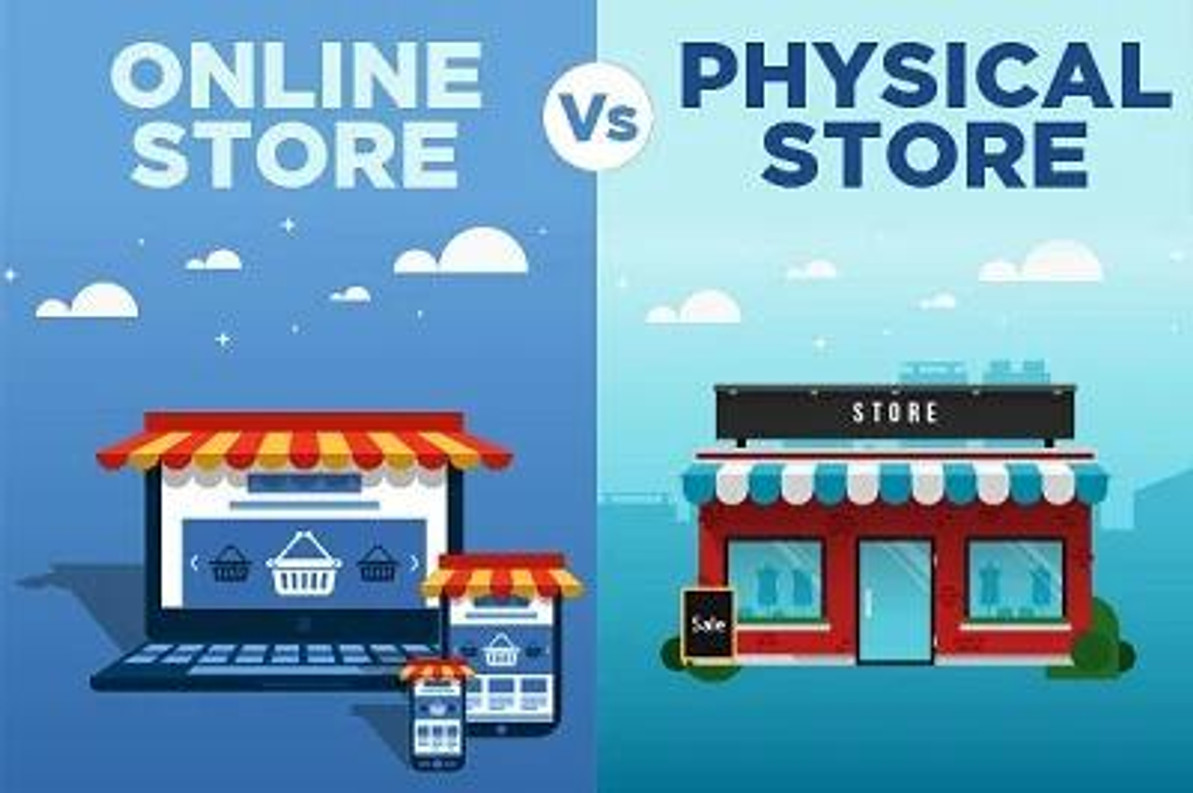Setting up an Online Vs. a Physical Store
Making a choice between selling via traditional, physical, brick-&-mortar store, and offering products and services through an online, e-commerce store, is indeed difficult. However, whether you sell offline or online, it is your interaction with your customers, relationship with your partners/suppliers is all that eventually matters. Each have their own challenges, advantages and disadvantages.
So, Online or Offline? How do you make a choice?
Certainly, the cost-benefit analysis of the two, helps make your decision. At one hand online store is booming with a number of online shoppers growing at a faster rate, yet, on the other hand, a significant percentage of shoppers still prefer physical store shopping. It implies that both of these options do bear opportunities for businesses and retailers alike. Therefore, which one you choose is more based on the nature of your business, products you sell and the method in which you want to connect with your customers.
Briefly highlighting the Pros & Cons of Online & Physical Store – Retailer Perspective
Let’s first talk about an online store.
- Online store requires lesser startup costs than physical store
- With less capital investment, retailers can start selling at once
- Shoppers get enhanced shopping experience in terms of choices, ease, and speed
- Retailers can track and save shoppers’ preferences, to be used for product development and marketing as well as inventory management.
- However, more marketing efforts and higher budgets are required for online store and absence of face-to-face interaction makes it difficult to connect to customers
- Those wanting to start online stores have the option to test markets by using drop shippers to execute their orders as well.
Now, about the physical store:
- Physical store is still the most popular, traditional choice for shoppers
- Higher visibility of brand/store and instant connection with customer is achieved
- However, higher setup, running and maintenance costs are required than online stores
- Careful, comprehensive planning is required to choose an optimal location
- Inventory planning and management is quite a task.
- Capital intensive proposition.
Are Online & Physical Stores Really Different in Terms of Shopping Experience?
Apart from few major differences, there are certainly some similarities between the two, making it possible to categorize both in terms of:
- Location: While shoppers need accessible locations for a physical store, online stores can ship to any country/state/location respectively.
- Convenience: Shoppers need convenience in terms of variety, to fit their lifestyle and quick purchase process. Online stores take an edge here due to their ability to hold more variations than physical stores as physical stores have limited space. For instance, www.supplyvan.com, Middle East's First and leading Industrial, Maintenance and DIY Products Marketplace and SuperStore, carries 34 product categories, more than 200 subcategories, and thousands of products, at a time including everything from Power Tools, Hand Tools, Safety, Hydraulic, Pneumatic products and many more categories of products that are required by industries, factories, workshops, warehouses, businesses and offices of all types and sizes.
- Knowledge: Shoppers prefer well established brands that can help shoppers to make buying decision. Physical store fulfills this through well-trained sales staff, while online store offers 24/7 call center service, live chat support, blogs, guides and videos.
- Inviting: Shoppers are attracted to appealing and unique looking stores. For physical store, outdoor display, billboard, interior design, creative placement of products, lighting, smell and easy-to-move ambiance matter. For online store, home page and overall web layout is important along with ease of navigation around the website. Surveys show that 44% of shoppers develop perception about site’s credibility based on its home page.
- Price: Not all shoppers look for the lowest prices. Make your pricing strategy according to your business and target market. For instance, if you have specialized offerings in your industry, your prices could be higher. The principle that most of today’s shopper compares price with the value they are getting, works both for physical and online store.
Heading Towards Omni-Channel Future
Latest surveys show that 85% of shoppers go for a unified experience, interacting with suppliers both on digital and physical location, expecting consistent and the best shopping experience. Seeing the blurred lines between online and physical store, increasing number of suppliers are now focused on bridging the gap between the two and developing multi channel sales that includes a combination of online and offline stores.
Recent Posts
-
Complete Facility & Warehouse Maintenance Guide for UAE Businesses
In Dubai and across the UAE, buildings and warehouses face tough conditions—intense heat, fine dust, …8th Dec 2025 -
Top 10 Must-Have Hand Tools for Every Toolbox
Every home needs a few reliable tools to handle small fixes, quick projects, and everyday surprises. …7th Nov 2025 -
Best Loading Dock Bumpers for UAE Warehouses in 2025
Warehouses across the UAE are busier than ever, with trucks arriving and leaving around the clock. E …24th Oct 2025




